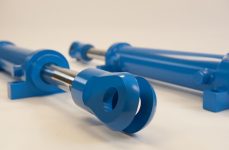Published on the 17/11/2016 | Written by Anthony Caruana

While ‘people, process and systems’ mantra has driven process design and execution for decades, gaps remain…
That’s because even if with great processes running on optimised systems operated by highly proficient people, there’s still something else required: the tacit knowledge of how make all the elements work together.
That’s what Holocentric calls the “DNA” of the business and it is this that the vendor sets out to manage, bringing together the corporate knowledge that links different systems and processes.
It’s a concept initially developed by the company’s CTO Derek Renouf over a decade ago, with an initial focus on software development, but which has since evolved into what he describes as a specific business management system called Holocentric BMS.
“It’s a dynamic model of a business, addressing the gaps between enterprise systems and how people work with them. It looks at the responsibilities they have and how they operate the business,” said Renouf.
He said Holocentric does not replace any specific system; rather, it seeks to ensure they work well together. This is crucial when people leave an organisation, as they often take important, undocumented information with them on how processes work.
“The sort of business problems we apply this to are things like business transformation where a company might want to implement a new system. We help them collect requirements and organise their processes for how they want to work in a new environment,” he said.
Another scenario (of late prevalent in the IT service provider space in Australia and New Zealand) is merger and acquisition activity. Renouf said companies want to understand how processes will work post-merge. “You can model how you are going to operate and identify the roles played by specific systems,” he said.
It is also possible to model the effects of changing regulatory obligations on processes and new business strategies, with industries as diverse as utilities, catering, banking and aircraft design likely to benefit.
The CTO said Holocentric is offered as a platform, capable of adapting to specific requirements. Describing its approach to research and development, he said it takes a “firehose” of suggestions to generate product requirements by looking for core issues customers are trying to solve.
“We’re a bit like agile farmers,” said Renouf. “We digest those needs and work them over a period of time. We’ll streamline the delivery and feedback to our stakeholders to make sure what we create is fit for purpose.”
And, he said, as the company uses its own software to drive development, it can prototype and test new features before putting them into a release.



























